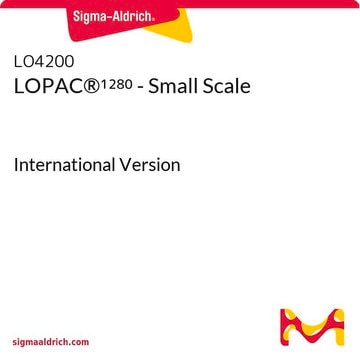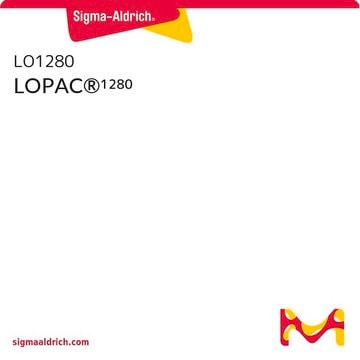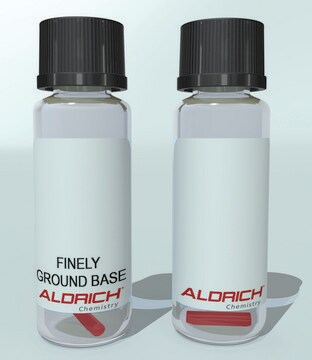DYNA001
DyNAbind® DNA-Encoded Fragment Library
Sinónimos:
DNA encoded library, DNA library
About This Item
Productos recomendados
form
pellets
storage temp.
−20°C
Application
Analysis Portal
More information about DyNAbind
Features and Benefits
- Off-the-shelf, affordable access to DEL technology
- Dynamic fragment library provides a revolutionary approach to DELs offering unprecedented library and data quality
- High level quality control with every single member individually purified and validated to maximize data reliability and chances for finding good hits
- Rule of Three used in library design ensures compounds are in favorable fragment space with good ligand efficiency and plenty of room for optimization (Congreve et al. 2003, Jhoti et al. 2013)
- Ability to perform and validate initial DEL screening internally before engaging service provider
- A library with maximized diversity, ready to deploy against nearly any druggable target
Product Overview:
- Dynamic fragment-based DEL as alternative or complement to existing screening technologies
- Consumable, off-the-shelf product for immediate use
- 5 vials, each containing a single-use library for one experimental condition
- Detailed protocol accessible to most drug discovery labs
- A dedicated analysis portal and protocol to identify hits
Legal Information
The use of this DyNAbind Product (the “Product”) is covered by European Patents EP 3 094 745 B1 and EP 3 169 832 B1 and corresponding applications pending in the US, Canada, and Japan. Purchaser is granted the right to use the Product for its internal research use only. This limited use label license does not grant the purchaser any right to use resulting fragments or products in commercial products or services. For information on commercial rights, please contact the outlicensing department at licensing@dynabind.com.
Storage Class
13 - Non Combustible Solids
wgk_germany
WGK 3
flash_point_f
Not applicable
flash_point_c
Not applicable
Choose from one of the most recent versions:
Certificados de análisis (COA)
Don't see the Right Version?
If you require a particular version, you can look up a specific certificate by the Lot or Batch number.
¿Ya tiene este producto?
Encuentre la documentación para los productos que ha comprado recientemente en la Biblioteca de documentos.
Los clientes también vieron
Artículos
Dynamic Library technology in drug discovery delivers reliable results with high chemical diversity, suitable for various targets.
DNA encoded libraries (DELs) offer a paradigm shift in drug discovery by leveraging molecular biology and high-throughput screening. DELs offer a full high-throughput screening library in one vial. Along with our DEL data package, machine learning and AI can be utilized to determine even more information on targets.
Nuestro equipo de científicos tiene experiencia en todas las áreas de investigación: Ciencias de la vida, Ciencia de los materiales, Síntesis química, Cromatografía, Analítica y muchas otras.
Póngase en contacto con el Servicio técnico















